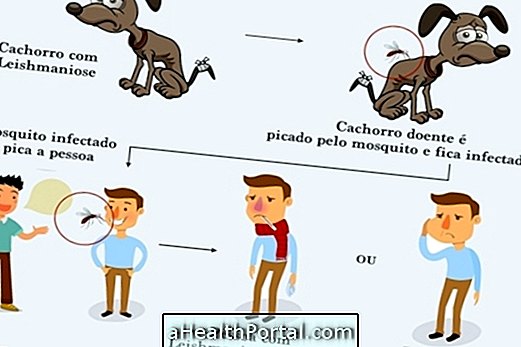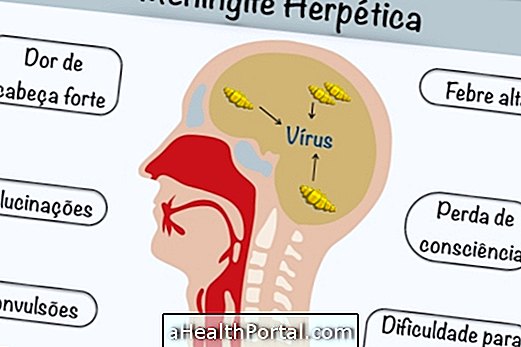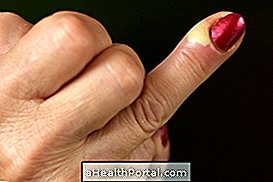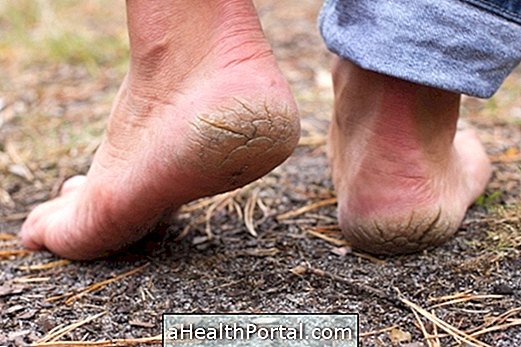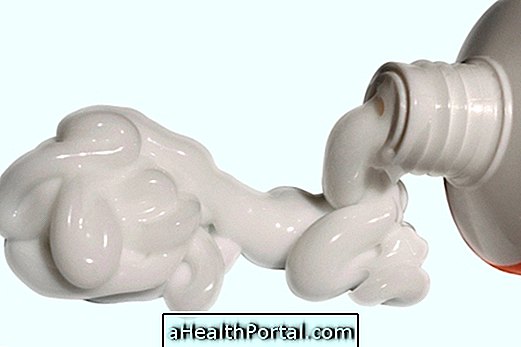Fever occurs when body temperature is above 37.8 ° C, if the measurement is oral, or above 38.2 ° C, if the measurement is made in the rectum. This change in temperature is more frequent in the following cases:
- Infection, such as tonsillitis, otitis or urinary tract infection;
- Inflammation, such as rheumatoid arthritis, lupus or giant cell arthritis.
Although it is rarer, fever can also occur in cases of cancer, especially when there is no other apparent cause such as colds or flu.
In order to reduce the fever, one should first use natural and homemade methods, such as bathing with warm water or white willow tea, and if the fever does not subside, consult the general practitioner to start treatment with antipyretic medicines, such as o Paracetamol.
Here's how to properly measure body temperature.

Natural Treatments for Lowering Fever
There are several natural methods that can help lower the fever before it is necessary to use antipyretic medicines, and include:
- Remove excess clothing;
- Stay near a ventilator or in an airy place;
- Put a wet towel on cold water on the forehead and wrists;
- Take a bath with warm water, not too hot or too cold;
- Keep the home at home, avoiding going to work;
- Drink cold water;
- Take orange, tangerine or lemon juice because it strengthens the immune system.
However, if a child is less than 3 months old, or a person with heart disease, lung disease or dementia, a general practitioner should be consulted immediately, especially if the fever is above 38 ° C.
Top Pharmacy Remedies
If the fever is above 38.9 ° C, and if home methods are not sufficient, the general practitioner may advise the use of antipyretic medicines such as:
- Paracetamol, such as Tylenol or Pacemol;
- Ibuprofen, such as Ibufran or Ibupril;
- Acetylsalicylic acid, like Aspirin.
These medicines should be used with caution and only in cases of high fever and should not be taken continuously. If the fever persists, the general practitioner should be consulted again to see if it is necessary to take any medication to combat a possible infection. Learn more about the medicines used to lower the fever.
In the case of children, the dose of the medicine varies according to the weight and, therefore, it is always necessary to inform the pediatrician before using any medicine. Here's what to do to get baby fever down.
Home Remedies Options

A good way to lower the fever before resorting to an antipyretic remedy is to choose to take warm tea to cause sweating, thereby reducing fever. It should be noted that these herbal teas can not be taken by infants without the knowledge of the pediatrician.
Some of the teas that help lower the fever are:
1. Freixo Tea
Ash tea, in addition to helping to reduce fever, also has anti-inflammatory and analgesic properties that relieve the discomfort associated with fever.
Ingredients
- 50g of dry ash bark;
- 1 liter of hot water.
Method of preparation
Place the dried ash bark in the water and boil for 10 minutes and filter. Take 3 to 4 cups a day until the fever goes down
2. Tea of Quineira
Quineira tea helps to reduce fever and also has antibacterial properties. Its action is enhanced when used in conjunction with white willow and ulmar.
Ingredients
- 0.5 g of finely chopped bark;
- 1 cup of water.
Method of preparation
Put the kebab in the water and boil ten minutes. Drink 3 cups a day before meals.
3. White willow tea
White willow tea helps to reduce fever because this medicinal plant has salicose bark, which has anti-inflammatory, analgesic and febrifuge.
Ingredients
- 2 to 3 g of white willow bark;
- 1 cup of water.
Method of preparation
Place the white willow bark in the water and boil for 10 minutes. Then filter and drink 1 cup before each meal.
There are other teas that can be taken to lower the fever, such as macaque tea, thistle or basil, for example. See 7 Teas to lower fever naturally.

What not to do when a child develops a fever
The fever happens very often in the child, causing great anxiety in the family, but it is important to avoid doing some things that could make the situation worse:
- Try to warm the child by wearing more clothes, or putting more clothes on the bed;
- Use medication to lower fever at fixed times;
- Decide to treat fever with antibiotics;
- Insist on the child to eat in a normal and abundant manner;
- Assume that the fever is high due to a dental eruption.
In some cases it is normal for children to have seizures because their brain is still immature, and the nervous system is more vulnerable to a rapid rise in temperature. When this happens, it is important to note the start and end times of the crisis, put the child to one side, and reduce the room temperature until the child wakes up. If it is the first febrile seizure, one should go immediately to the emergency room.


